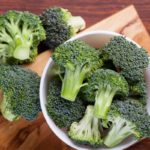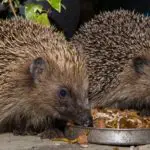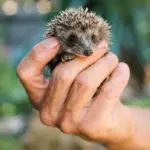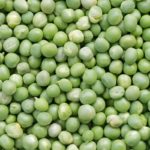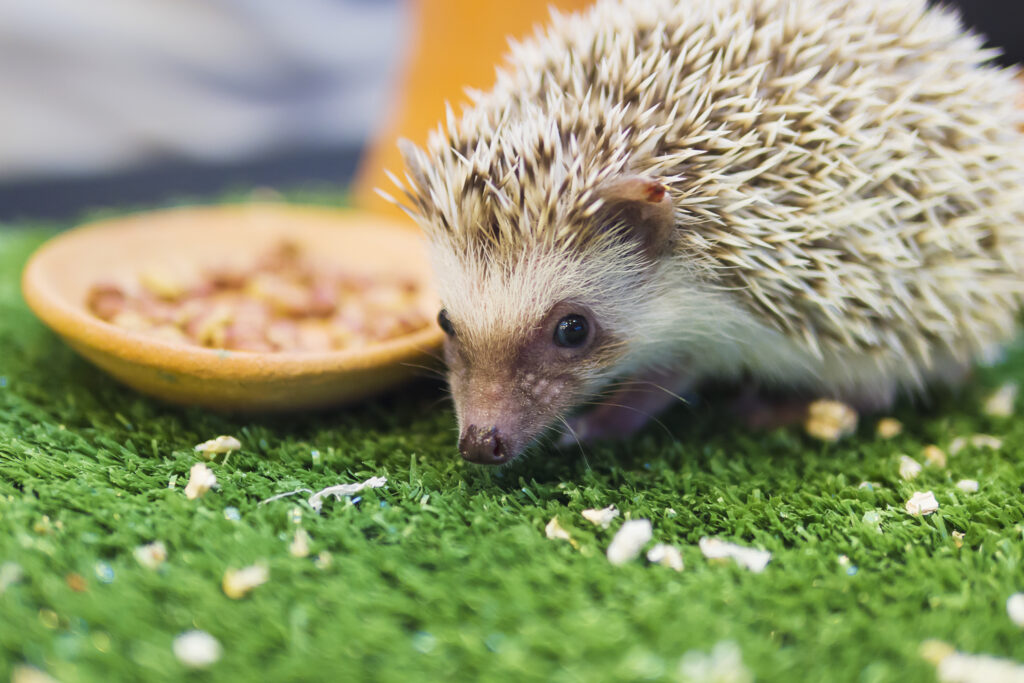
Discover why letting hedgehogs eat bread isn’t ideal and explore the healthier alternatives they should munch on instead!
Quick Answer: While it might seem harmless to let hedgehogs eat bread, doing so is not advised because bread lacks essential nutrients and can lead to digestive issues, obesity, and dental problems in these small animals.
Key Takeaways:
- Hedgehogs require a diet rich in protein and fiber, akin to their natural diet of insects and small invertebrates, which makes the choice to let hedgehogs eat bread a poor one. Bread, with its high carbohydrate and sugar content, fails to meet its nutritional requirements and can contribute to health issues like obesity and digestive problems.
- Allowing hedgehogs to eat bread can disrupt their sensitive digestive systems, leading to gastrointestinal distress, dental issues, and even choking hazards. This underscores the importance of excluding processed human foods like bread from their diet to avoid these health risks.
- To maintain hedgehog health and mimic their natural foraging behavior, provide a balanced diet with specially formulated commercial hedgehog food, live insects, and occasional fresh fruits and vegetables, while ensuring a clean and safe feeding environment with access to fresh water.
Exploring the Risks: Can Hedgehogs Safely Eat Bread?
When it comes to hedgehog dietary needs, bread doesn’t quite cut. While these spiny little creatures may nibble on a variety of foods, bread is not a natural or beneficial choice for them. The nutritional content of bread is largely made up of carbohydrates, with minimal protein and almost no fiber. Hedgehogs require a diet that is high in protein and fiber to maintain their health and energy levels.
When hedgehogs eat bread, especially in large amounts, it can lead to digestive issues. Their gastrointestinal tracts are sensitive, and bread can cause discomfort or even harm. It’s important to remember that a hedgehog’s natural diet consists of insects and other small creatures, providing the essential nutrients they need. Human foods, including bread, are often lacking in these vital components and can disrupt their delicate digestive systems.
Hedgehogs Eat Bread: Assessing the Nutritional Consequences
Bread is primarily composed of carbohydrates and sugars, which are not the mainstays of a hedgehog’s diet. These animals thrive on essential nutrients found in their natural prey, such as insects, which are rich in protein and fiber. The carbs and sugars in bread can lead to unnecessary weight gain and do not provide the nutritional value hedgehogs need to stay healthy.
In contrast to the natural hedgehog diet, when hedgehogs eat bread, it lacks the necessary components to keep these animals in top condition. This can result in a nutritional imbalance, potentially leading to health issues over time. It’s crucial to focus on providing a diet that mimics what they would find in the wild, full of insects and natural goodness, rather than human food that falls short of their dietary requirements.
Hedgehogs Eat Bread: Uncovering Potential Health Risks
Introducing bread to a hedgehog’s diet can pose several health risks. The simple carbohydrates in bread can contribute to obesity in hedgehogs, which is a serious concern for their overall well-being. Additionally, bread can cause dental problems, as it does not aid in the natural wear of their teeth, unlike the crunchy texture of insects and other natural foods.
Moreover, when hedgehogs eat bread, it can pose additional risks beyond nutritional deficiencies. Bread’s doughy texture can be a choking hazard or cause digestive blockages, as it’s difficult for hedgehogs to chew and digest properly. These risks underscore the importance of avoiding processed foods when feeding hedgehogs. Their health depends on a diet that is free from such human-oriented products, ensuring their well-being and longevity.
Digestive Dilemmas: Understanding Why Hedgehogs Eat Bread Despite System Limitations
The hedgehog’s digestive system is uniquely adapted to handle a high-protein diet and high-fiber diet, which is a far cry from what bread offers. Feeding bread to hedgehogs can disrupt the balance of their gut flora, leading to gastrointestinal distress. Hedgehogs cannot process large amounts of carbohydrates efficiently, and they do not have the enzymes necessary to break down certain types of food, including those found in bread.
This mismatch between the hedgehog’s digestive capabilities and the properties of bread underscores the importance of providing a diet that aligns with their natural eating habits. Ensuring that hedgehogs receive the right nutrients will help maintain their health and prevent the discomfort and potential harm caused by inappropriate foods like bread.
Appropriate Diet for Hedgehogs: Where Does Bread Fit In?
When it comes to feeding hedgehogs, knowing what constitutes a healthy and appropriate diet is key. In the wild, hedgehogs feast on a variety of insects, fruits, and vegetables. These foods provide the essential nutritional needs for these small, spiky creatures. For pet hedgehogs, replicating this diet is important. There are quality commercial hedgehog foods available that are formulated to meet their dietary requirements. In addition to these foods, offering a variety of treats in moderation ensures that hedgehogs get all the necessary nutrients for a balanced diet.
Natural Food Sources for Hedgehogs in the Wild
In their natural habitat, hedgehogs have a diet rich in insects and small invertebrates. This diet provides them with protein and chitin, which are crucial for their health. They also consume plant matter occasionally. Hedgehogs are natural foragers, and this behavior plays a significant role in their dietary habits. For pet hedgehogs, a diet that mimics these natural food sources can be beneficial. It supports their health and satisfies their instinct to forage.
- Insects such as mealworms and crickets are staples in a wild hedgehog’s diet.
- Invertebrates and occasional plant matter provide a well-rounded nutrient profile.
- Foraging for food keeps hedgehogs active and engaged.
Best Practices for Supplementing Hedgehog Diets
Supplementing a hedgehog’s diet can be beneficial if done correctly. Here are some guidelines for safe supplementation:
- Introduce new foods gradually to avoid digestive upset.
- Maintain portion control to prevent obesity and other health issues.
- Balance supplemental foods with their primary diet to ensure nutritional needs are met.
- Consider adding calcium or vitamin powders to their meals if necessary.
It’s important to avoid relying too heavily on any single food item, especially those not part of their natural diet, like bread. A diverse diet is key to a healthy hedgehog.
How to Mimic Natural Hedgehog Diets in Captivity
Creating a diet for pet hedgehogs that resembles their wild counterparts involves several steps:
- Choose commercial hedgehog food that is specially formulated for their needs.
- Incorporate live insects into their diet to provide protein and encourage natural behaviors.
- Add fresh foods like fruits and vegetables in moderation.
- Avoid processed human foods, which can be harmful to hedgehogs.
By providing a varied diet, you encourage your hedgehog’s natural foraging behavior, keeping them healthy and entertained. Remember, bread and other human foods do not offer the nutritional value that hedgehogs require and should be avoided.
Foods to Avoid: Can Hedgehogs Eat Bread and Other No-Nos in Their Diet?
When it comes to what hedgehogs eat bread should be on the list of foods to avoid, not just for its lack of nutritional value but also because certain foods can be harmful to hedgehogs and should be kept out of their diet. This includes items high in fat, sugar, or spices, which are not part of a species-appropriate diet. Beyond the issue of hedgehogs eating bread, they can also experience allergic reactions or food intolerances, leading to dietary distress. To prevent health issues, it’s essential to recognize and avoid feeding your spiky friend such inappropriate foods and to watch for signs of discomfort or illness.
Common Human Foods That Are Harmful to Hedgehogs
Hedgehogs have sensitive systems, and many human foods can be dangerous for them. Here’s a list of items to steer clear of:
- Chocolate and caffeine: These contain substances that are toxic to hedgehogs.
- Bread: It offers no nutritional value and can lead to obesity and digestive issues.
- Fruits and vegetables high in acid or sugar: These can upset their stomachs.
Feeding leftovers or table scraps can also be risky, as they often contain ingredients that are not safe for hedgehogs. Always be cautious when introducing new foods to your hedgehog’s diet, and stick to those that are known to be safe.
Identifying Risky Foods: Can Hedgehogs Eat Bread Without Getting Ill?
It’s important to recognize the signs that a food item is not agreeing with your hedgehog. Symptoms of illness can include:
- Loss of appetite
- Changes in behavior
- Abnormal stool consistency
Knowing the origin and composition of the foods you offer is crucial. Avoid processed foods and those with unknown ingredients. If your hedgehog does eat something harmful, seek emergency care immediately.
Why Dairy Products Are a No-Go for Hedgehogs
Dairy products are not suitable for hedgehogs due to their inability to process lactose. This can lead to:
- Digestive issues like diarrhea and stomach pain
- Dehydration from digestive upset
Instead of milk or dairy, always provide fresh water for hydration. There are also dairy alternatives if you’re looking to give your hedgehog a treat, but these should be given sparingly and with caution.
By avoiding these harmful foods and sticking to a diet that’s right for hedgehogs, you’ll help ensure your pet stays happy and healthy.
Creating a Hedgehog-Friendly Feeding Environment
Creating a welcoming space for hedgehogs to dine is both rewarding and beneficial for these charming creatures. Whether you’re catering to a pet or wild hedgehogs visiting your garden, it’s important to provide a hedgehog feeding station that’s safe from other animals. Maintaining hygiene in the feeding area is crucial to prevent the spread of disease. Additionally, observing these nocturnal animals can be a delightful experience if done in a way that doesn’t cause them stress.
Step-by-Step Guide to Making a Hedgehog Feeding Station
A hedgehog feeding station can be a simple DIY project. Here’s how to create one:
- Choose a quiet location in your garden where hedgehogs can feed without disturbance.
- Use materials like wood or a sturdy plastic box to construct the station.
- Ensure the station is accessible for hedgehogs but not for larger animals. A small entrance hole is key.
- Place the food inside and keep the station clean, refreshing the food regularly.
- Remember to only provide appropriate foods and avoid bread and other unsuitable items.
By following these steps, you’ll create a safe haven for hedgehogs to enjoy their meals.
Tips for Keeping Your Hedgehog’s Food Safe from Other Animals
Protecting the hedgehog’s food from other animals is essential. Here are some tips:
- Use barriers like bricks or rocks to prevent larger animals from accessing the food.
- Position the feeding station against a wall or fence to limit entry points.
- Time your feedings to coincide with dusk when hedgehogs are most active.
- Be mindful of not attracting pests and consider the impact on the local ecosystem.
These measures help ensure that the food you provide is consumed by the intended guests and not by other wildlife or pets that may be drawn to the feeding area.
The Importance of Clean Water and How to Provide It
Water is a vital resource for hedgehogs, and providing a consistent supply is as important as offering food. Here’s how to ensure hedgehogs stay hydrated:
- Use shallow water dishes that hedgehogs can easily access.
- Place water dishes in a shaded area to keep the water cool and fresh.
- Clean the dishes regularly to prevent the growth of bacteria.
Dehydration can be a serious issue for hedgehogs, so watch for signs like lethargy or a loss of appetite. And remember, milk is not suitable for hedgehogs due to their lactose intolerance. Always provide clean water instead of any other liquids.
By setting up a proper feeding environment, you’re not only helping hedgehogs thrive but also enjoying the unique opportunity to observe these fascinating creatures up close. Just be sure to keep bread off the menu, as it doesn’t contribute to their well-being.
Caring for Hedgehogs Beyond Diet
While diet is a fundamental aspect of hedgehog care, there’s much more to ensuring the well-being of these endearing creatures. A suitable habitat is essential, whether you’re providing for a pet hedgehog or creating a welcoming space in your garden. Regular health monitoring is crucial to catch any signs of illness early, and understanding common health issues can help you respond quickly and effectively. Moreover, everyone can play a part in conservation efforts to support hedgehog populations, ensuring these animals continue to thrive in the wild.
Recognizing and Responding to Hedgehog Health Issues
Hedgehogs, like all animals, can experience health problems, and being able to recognize the signs is vital:
- Changes in eating habits, such as ignoring favorite foods or difficulty eating, can be a red flag.
- Lethargy or unusual behavior may indicate that a hedgehog is not feeling well.
- Physical signs, such as weight loss, skin issues, or abnormal droppings, require attention.
If you notice any of these signs, it’s important to seek veterinary care promptly. Regular health checks can help detect issues before they become serious. Be aware that diet-related health issues, including those caused by inappropriate foods like bread, are common and preventable.
Habitat Considerations for Backyard Hedgehogs
Creating a hedgehog-friendly backyard can make a significant difference for local wildlife:
- Provide shelters and safe hiding spots where hedgehogs can rest and feel secure.
- Ensure the garden is free from hazards like open drains or netting that hedgehogs can get trapped in.
- Practice chemical-free gardening to protect hedgehogs from harmful pesticides.
By fostering a natural habitat, you encourage hedgehogs to visit and take up residence in your garden, which can be a delightful way to support these creatures.
Contributing to Hedgehog Conservation Efforts
Hedgehog numbers have been declining, but there are many ways to help:
- Participate in wildlife surveys to track local hedgehog populations.
- Support hedgehog rescue organizations with donations or by volunteering.
- Educate your community about hedgehogs and the importance of conservation.
Your efforts, combined with those of others, can have a positive impact on hedgehog survival and contribute to the health of local ecosystems.
Frequently Asked Questions
Question 1:
Can hedgehogs have any type of bread as a treat?
Answer: No, hedgehogs should not have bread, even as a treat, due to its lack of nutritional value and potential health risks.
Question 2:
Are there any bread alternatives that are safe for hedgehogs?
Answer: Instead of bread, offer hedgehogs safe treats like small pieces of fruits or vegetables, but always in moderation.
Question 3:
What should I do if my hedgehog accidentally eats bread?
Answer: Monitor your hedgehog for any signs of digestive distress and consult a vet if you notice any health issues.
Question 4:
Can baby hedgehogs digest bread better than adults?
Answer: No, baby hedgehogs also cannot properly digest bread and it should not be included in their diet.
Question 5:
Is it safe to leave out bread for wild hedgehogs in my garden?
Answer: No, do not leave out bread for wild hedgehogs; it’s unhealthy for them and can attract unwanted pests.
Read more facts about Hedgehogs here.





